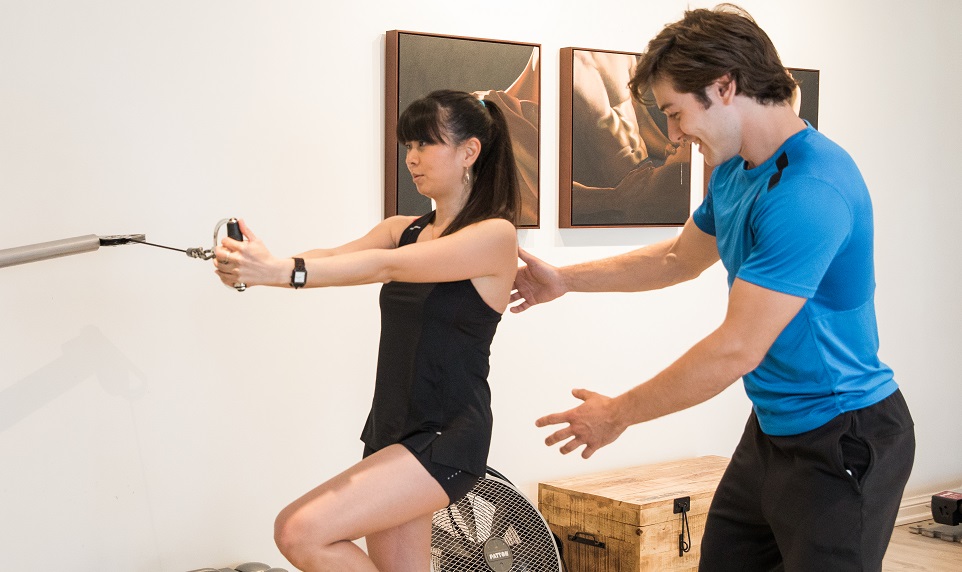
Don’t Let High Heels Ruin Your Biomechanics
Originally Written By: Alex Allan | ![]()
Original Title: Don’t let shoes ruin your bio-mechanics: How to protect yourself from the damage of high heels
As high fashion collides with solid science, it appears that what props us up may also tear us down. A recent New York Times article quoted a review of footwear research, published in the Journal of Electromyography and Kinesiology, which concluded that walking in high heels can “alter the natural position of the foot-ankle complex, and thereby produce a chain reaction of effects that travel up the lower limb at least as far as the spine.” Another study mentioned in the article noted that wearing heels frequently over several years can lead to decreased muscular stability.
The problem starts with the fact that wearing high-heeled shoes significantly alters the normal displacement of human centre of mass by shifting it forward. This, combined with an unavoidable and sustained calf muscle contraction, causes the body to compensate and fall out of optimal alignment.
Current research supports that chronic use of high heels can lead to long-term muscle weakness, injury and postural imbalances that can leave you hurting from the toes up. Despite these risks, the American Osteopathic Association claims that one in 10 women wears heels three times a week.
If pitching your Louboutin stilettos into the garbage seems unthinkable, use the tips below to keep you one step closer to the catwalk without feeling like you can’t walk.
1. What happens at the ankle affects the knee
Several studies have identified that walking in high heels increases the compressive force across the inside of the knee joint, with one study citing an average of 23 per cent greater forces when compared with barefoot walking. It has been speculated that this repeated wear can lead to knee osteoarthritis due to the fact that, as heel height increases, the internal twist and inward force at the knee also go up. The best way to counteract this is to strengthen the lower, inner muscles on the front of the thigh and the upper outer gluteus medius muscle at the hip. Do the exercises below to target these areas.
What to do
Prone quad squeezes: Lying flat on your stomach with your ankles flexed and toes under heels and knees slightly bent, slowly straighten your legs and squeeze the kneecaps by tightening the muscles on the front of the leg. Hold for 10 seconds and repeat five times. Slowly work up to two sets of 20 repetitions every other day. If it is harder to feel the squeeze on one side relative to the other, do each leg separately.
Bridge to clamshell: Lying face up with knees bent and weight on the heels, squeeze the stomach and lift the hips up slowly without excessively arching the lower back. Begin to slowly spread the knees apart without dropping the hips. Hold for five to 10 seconds while actively tensing the butt. Repeat five times. Add a band just above the knees to progress this exercise. Perform one set with the goal of working up to 15 repetitions.
2. Power heels lead to weaker ankles
A study in the June edition of the International Journal of Clinical Practice found that chronic use of high heels actually caused ankle muscles to get weaker. The authors suggest that wearing high heels may strengthen ankle muscles at first (one to three years), but prolonged use (about four years) of high heels eventually causes imbalances between four main muscle groups of the foot and ankle. This shift is a crucial predictor of ankle injury. This “overtraining” effect shortens and weakens the calf muscles by up to 29 per cent while stiffening the Achilles tendon. This leads to discomfort and calf-strain injuries, and compromises muscle efficiency in walking.
What to do
If possible, decrease the frequency of wearing high heels to every third day instead of every other day. Also, try the following exercises to promote strength and muscle recovery between days.
Cross-legged trigger-point release of calves: Sit on a standard height chair and cross your legs in such a way that your upper calf is resting on top of the kneecap of the opposite leg. Gently push the calf down onto the kneecap and search for a slightly painful spot. Hold the spot and slowly move the foot of the top leg up and down. This will increase the discomfort while releasing the sore spot. Find four to five spots and repeat the process on each calf. Do this once a day.
Slow calf raises with holds: Stand with the balls of the feet on a step and the heels hanging down in a calf stretch position. Push off the step and raise the body up by using the calf muscles. Slowly lower the heels back down to the start position using a four-second tempo. Hold the deep stretch position at the bottom for five seconds and then push back up to the top. Repeat six times. Gradually work up to three sets of 15 repetitions but take your time to avoid muscle soreness.
3. High heels lead to higher arches
A 2009 review from the Journal of the American Podiatric Medical Association referred to two studies focusing on the effects of high heels and women’s arch height. One study found an increase of 0.4 centimetres after a single day of wearing high heels six or seven centimetres in height. The problem with a high arch, according to a 2001 clinical bio-mechanics review is that, as the arch height increases, the ability to absorb forces decreases. This leads to an overload of other joints in the body that can result in a variety of injuries at the ankle and knee.
What to do
Tennis ball under foot: Stand with a tennis ball under your foot and lightly put pressure down onto it until you find an uncomfortable spot. Push your foot down onto the ball to increase the pressure slightly. Hold 30 seconds and then move to another spot.
Deep fascia stretch: Stand with your toes on the edge of a stair. Slowly sink your heels down. This stretch should be felt under the foot as well as in the calf. If not, put less of your forefoot on the step and try again. Hold 30 seconds.
(If you have plantar fasciitis, consult a professional before trying any exercises)
